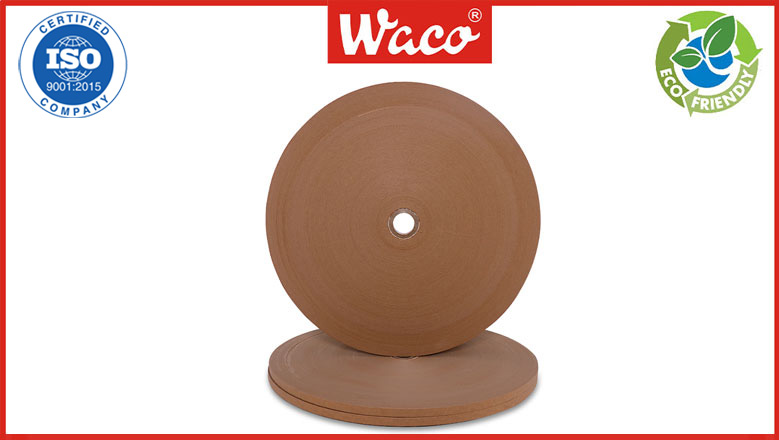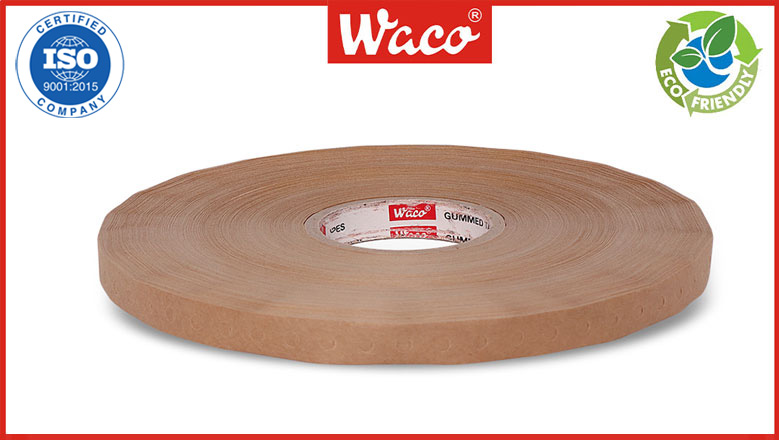Veneer Tapes –Types, Advantages and Usage
Posted December 13th, 2021 by WACO tapes
What Is Veneer Tape?
The prettiness of this water-activated veneer joint tape is that it shrinks as it
dries. Veneer tape is used to join two fragments of veneer and keep the joint
tight while the adhesive cures. It is this shrinking act that pulls the veneers
together and makes a fine cut joint nearly invisible. Veneer tape is essential to
keep the veneer edges tight while inside the press. The magnificence of veneer
tape is that as it becomes dry, it shrinks. This shrinking action helps to hold the
joint together while in the press. Tapes come in various widths and weights. It
also comes in a hard and a perforated variety. The solid tape is appropriate for
thick and unruly veneers that require a bit more strength to maintain a tight
joint.
What Are Veneer Tapes Made Of?
This Product is essential to the decorative plywood manufacturer. Tapes are
manufactured from solid Kraft paper coated with a blend of high-quality
adhesives for firm adherence to veneer and wood surfaces.
They are the superior quality solution for the design of seamless veneer surfaces from real wood, such as cherry and beech. Their leading area of use is the manufacturing of veneer panels without detectable or tangible joints for refining the surfaces of furniture, doors, wall cladding or fittings. The water- activated veneer tapes, which are manufactured from ultra-thin specialist paper, are the new classics among veneer adhesives.
The sparing application of a little water is all that's essential for it to achieve its directly effective and long-lasting bonding performance. The starch adhesive that we use in all of the gummed coatings on our veneer tapes is totally harmless.
They are the superior quality solution for the design of seamless veneer surfaces from real wood, such as cherry and beech. Their leading area of use is the manufacturing of veneer panels without detectable or tangible joints for refining the surfaces of furniture, doors, wall cladding or fittings. The water- activated veneer tapes, which are manufactured from ultra-thin specialist paper, are the new classics among veneer adhesives.
The sparing application of a little water is all that's essential for it to achieve its directly effective and long-lasting bonding performance. The starch adhesive that we use in all of the gummed coatings on our veneer tapes is totally harmless.
How Are Veneer Tapes Applied?
To apply the veneer tape, heat your iron to just shy of the hottest setting. Use
care with placing the iron while not using it. Cut a segment of tape 1-in. longer
than required. Cut off a slightly longer piece of tape than you want.
An easy way to apply the tape to your veneer is to hold the tape in one hand, put a small vessel of water with a sponge in it on your worktable, and pull the tape over the wet sponge with your other hand. The adhesive on veneer tape is activated by water, similar to the glue used on an envelope. You want to wet the tape to activate the adhesive, but not soak it.
It is possible to achieve a great veneer joint using other kinds of tape, however the greatest benefit of using veneer tape is that as it dries, it shrinks slightly, thereby pulling your joint seams nearer together.
An easy way to apply the tape to your veneer is to hold the tape in one hand, put a small vessel of water with a sponge in it on your worktable, and pull the tape over the wet sponge with your other hand. The adhesive on veneer tape is activated by water, similar to the glue used on an envelope. You want to wet the tape to activate the adhesive, but not soak it.
It is possible to achieve a great veneer joint using other kinds of tape, however the greatest benefit of using veneer tape is that as it dries, it shrinks slightly, thereby pulling your joint seams nearer together.
Most Popular Types of Veneer Tapes?
Green veneer tapes, dry veneer tapes and core veneer tapes.
Advantages of Veneer Tape?
The tape is soft and easy to tear by hand; precision layering technology,
adequate viscosity, no remaining glue stains on the surface of the adhesive.
Flexible production of Veneer Tape specifications can be cut at will accord user
requests.
Veneer Tape is appropriate for various surfaces with different temperature
environments & different materials.
The Veneer Tape is made of natural resources, unlike other OPP plastic tapes it
has static harms and decreases the hold to paper.
The main ingredients come from natural green plants, waste incineration, and
produce less dangerous gas than OPP tape. It has low carbon and
environmental safety.
Usage / Application of Veneer Tapes?
The attractiveness of this water-activated veneer joint tape is that it shrinks as
it dry up. It is this shrinking act that pulls the veneers together and makes a
well-cut joint almost undetectable. Veneer tape is used to join two pieces of
veneer and keep the seam tight while the adhesive preserves. The veneer
tapes are fit for use in the completely automatic production lines in the wood
processing production, as well as for semi-automatic or manual application at
furniture manufacturers or in handicraft businesses. The easiest way to use
veneer tapes are those which are punctured with holes. Three hole tape
permits the worker to see the seam under the tape which allows for
tightening/adjusting of the seam before the tape dry out.
Recent Posts
Categories



